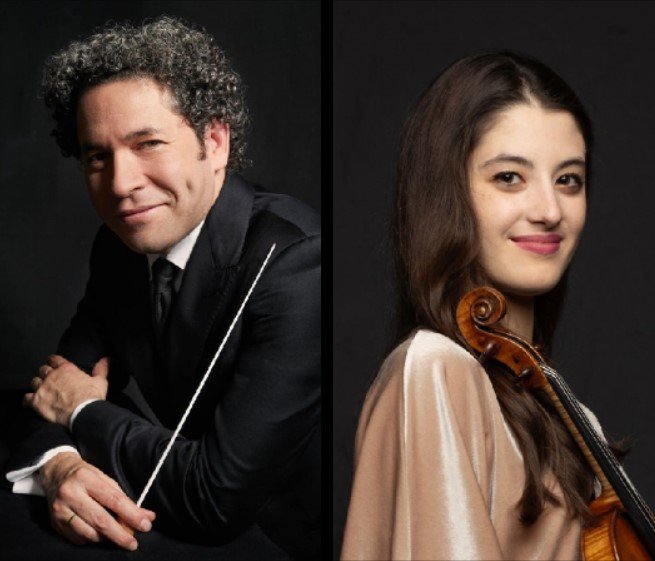Return of Dudamel’s Unsinkable Mahler Titanic First
/By Truman C. Wang
10/8/2022
On Saturday, October 8, the first week of its new season, the L.A. Phil played a thrilling Mahler Symphony No. 1 (“Titan”) under Gustavo Dudamel. It was the same work that inaugurated Dudamel’s first season with the L.A. Phil in 2009, but here performed with less bombast and more emotional depth (and more gray hair). It’s always exciting to behold the eight horns leaping onto their feet to blare out the final, triumphant brass chorale, or the brilliant codas of the first and second movements (with the inevitable applause that followed, despite the bilingual PSA announcement to “hold your applause until the end” – apparently we need to a better job of community arts outreach to the adults not just to the school kids.) However, for me the best thing about last night’s performance were the finer details in Dudamel’s reading.
The first movement’s transition from slow, dark introduction to the bright morning song of the Fahrenden Gesellen lieder was magical. The tempo, brisk and flowing, matched the cheerful mood. The balance between the strings and winds was ideal. The second movement is a rustic hunting dance played with comically exaggerated rhythm and swagger; the musicians were clearly having a good time with this one, as evidenced by the jaunty little oboe solo wafting over the strings in the middle trio section (kudos for the L.A. Phil’s new principal oboe Marc Lachat). The third movement, the ironically merry ‘hunter’s funeral procession’ (based on the Freier Jacques nursery song), where a coterie of forest animals that the dead hunter supposedly hunted escort his coffin to the grave and play weird music along the way, received an appropriate treatment now comically irreverent, now gloomily meditative. The fourth movement was a genuine allegro furioso, recalling Dudamel’s insanely fast coda of the Beethoven Ninth last June. The horns and brass pulled out all the stops, so to speak, to make a grand case of, in Mahler’s words, “a flaming indictment of the Creator.”
Mexican composer Gabriela Ortiz’s violin concerto Altar de cuerda (Musical Altar) was heard before the Mahler. Within its traditional three-movement structure, Ortiz’s new work contains, according to the program notes, an Andalusian melody, cross-border cultural appropriations and re-appropriations (whatever that means), and at least three virtuoso cadenzas. The coolest feature is probably the second movement, where the L.A. Phil brass players all were asked to play tuned crystal glasses like a glass harmonica (no melody, only sounds). Spanish violinist María Dueñas played like a force of nature and with a winning smile, even after she broke the strings on her Strad, ran to the concertmaster to borrow his Strad, and resumed playing. Dudamel was a good sport and quickly picked up where they left off.
Two memorable performances, albeit for two very different reasons.
Truman C. Wang is Editor-in-Chief of Classical Voice, whose articles have appeared in the Pasadena Star-News, San Gabriel Valley Tribune, other Southern California publications, as well as the Hawaiian Chinese Daily. He studied Integrative Biology and Music at U.C. Berkeley.

